Computer Hardware Components Explained
It’s important for any business that utilises technology and computers to understand the basics of the computer hardware components they are using. Without the adequate hardware, your software may not run efficiently – if at all. It’s important to stay informed about the equipment your business uses, as it can greatly impact your productivity. The rest can be left to your business IT support provider!
Firstly, what is IT hardware? Put simply, IT hardware refers to any physical or tangible elements of a computer. IT hardware helps to facilitate any computing operations as well as taking input and outputting or storing the computed results.
There are four main computer hardware components that this blog post will cover: input devices, processing devices, output devices and memory (storage) devices. Collectively, these hardware components make up the computer system.
Input Devices
Input devices comprise of any devices that users need in order to give instructions to a computer. Essentially input devices act as the medium for sending data to a computer so that users can interact with and control it. The most widely known examples are the keyboard and mouse. Input devices are also used to transfer data between computers.
Output Devices
Output devices are devices that allow computers to send data to other devices or to users. In general, the data that computers send to human users is in forms that we can understand. Most often, these forms include audio and video. The most widely known examples of output devices are monitors, speakers and printers. These devices produce video, audio and graphic output, respectively.
Processing Devices
Processing is the core function of any computer. When a computer receives data from an input device, this data must first go through an intermediate stage before it is sent to an output device. Processing is the intermediate stage where raw data is transformed into information so that it can be outputted meaningfully for the user. An example of a processing device is the central processing unit (CPU), which is a set of electronic circuitry that processes and executes instructions.
Memory (Storage) Devices
Memory devices are any devices that are capable of storing information temporarily or permanently. There are two types of memory; primary and secondary. Primary memory refers to RAM (random access memory), which is used to store instructions and data temporarily before and after they are processed. RAM is volatile, which simply means it only retains information when the computer is turned on and is cleared once the computer turns off.
Secondary memory refers to any external storage media. Secondary memory is non-volatile, which means that information can be stored long-term. The most common example of an external secondary memory device is the USB flash drive.
Contact HIOD IT
If you are a business that is experiencing any IT hardware related difficulties, feel free to contact us at HIOD IT. Our experienced team understands the difference that reliable hardware can make to your business operations. We specialise in hardware procurement and can offer guidance on the most appropriate tools to help your business succeed!





